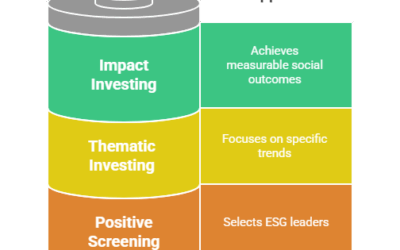In an era of market volatility and increased longevity, annuities continue to generate discussion among financial planners—often with mixed opinions. While not appropriate for every client, annuities can serve as a powerful tool when used strategically. This article breaks down the different types of annuities, when they make sense, and how to position them as part of a broader financial plan.
🧾 What Are Annuities?
At their core, annuities are insurance contracts designed to convert a lump sum or series of payments into a reliable income stream, typically for retirement. They’re often used to provide income that can’t be outlived, helping address the risk of longevity.
There are three primary types:
- Fixed Annuities: Offer guaranteed interest rates and predictable payouts.
- Variable Annuities: Invested in sub-accounts (similar to mutual funds) and tied to market performance.
- Indexed Annuities: Provide returns based on a market index (like the S&P 500) with downside protection.
- Each has its own risk/reward profile and suitability depending on the client’s goals.
🎯 When Do Annuities Make Sense?
Annuities are best used not as standalone investments but as income planning tools within a broader retirement strategy. They’re especially helpful for:
- Clients worried about outliving their savings
- Those seeking predictable income beyond Social Security
- Conservative investors wary of market risk
- High-income earners looking for tax-deferred growth
- Immediate annuities may benefit retirees needing income now, while deferred annuities suit clients planning for future income.
⚠️ When Not to Offer an Annuity
-
If the client has insufficient liquidity or will need access to the funds in the next few years
-
If the client is young and would benefit more from tax-advantaged market-based investments
-
If the client already has secure income streams that meet their retirement needs (e.g., strong pensions + Social Security)
-
If the client doesn’t understand or want to pay ongoing fees (especially with variable annuities)
🔍 Key Considerations for Financial Planners
1. Understand the Fees
Variable annuities, in particular, come with layers of fees—mortality and expense risk charges, investment management fees, and rider costs. Be transparent about these and weigh them against client objectives.
2. Evaluate the Client’s Liquidity Needs
Annuities often come with surrender charges and limited liquidity. Ensure the client has sufficient non-annuity assets for emergencies or large expenses.
3. Consider Longevity and Health
The longer your client lives, the more valuable an annuity may be. Other strategies might offer better returns or flexibility for clients with shorter life expectancies.
4. Use Riders Wisely
Optional riders like guaranteed lifetime withdrawal benefits (GLWBs) can add income security but come at a cost. Know when the rider’s value justifies the fee.
💬 How to Talk to Clients About Annuities
Keep the conversation focused on outcomes, not products. Instead of leading with the word “annuity,” start with their goals:
- “Would it give you peace of mind to know you’ll receive a paycheck every month in retirement?”
- “If the market drops, would you want some of your income to be insulated from that risk?”
- From there, position the annuity as a solution, not a sales tool.
🧩 Conclusion: Annuities as a Strategic Tool
Annuities aren’t right for every client, but in the proper context, they can serve a valuable role in delivering income security, reducing portfolio withdrawals, and complementing other retirement assets. As a financial planner, your job isn’t to sell products—it’s to offer clarity, evaluate trade-offs, and build a plan that fits the client’s goals.
Approached thoughtfully, annuities can be a powerful part of that plan.




